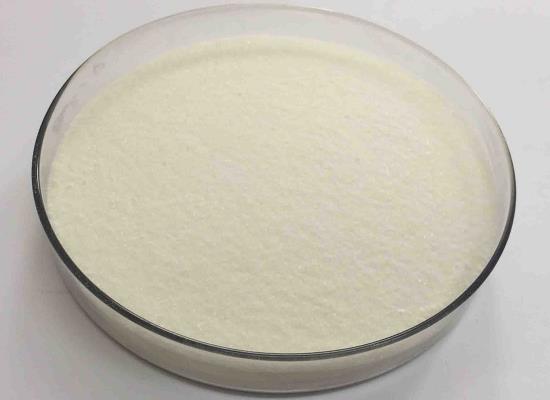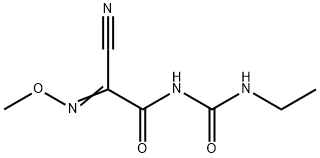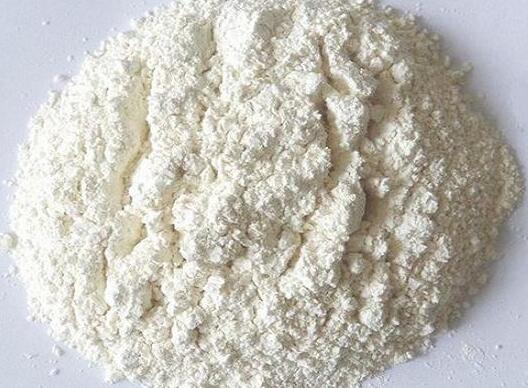Cymoxanil: Overview, Therapeutic Effects and Applications in Liposome Nanocarriers
General Description
Cymoxanil, a systemic fungicide, effectively combats severe plant diseases like cucumber downy mildew by inhibiting mycelial growth. Despite its efficiency and low toxicity, challenges such as sensitivity to pH and temperature, rapid degradation, and limited persistence hinder its broader application. To overcome these limitations, innovative approaches like the development of non-phospholipid liposomal nanocarriers, specifically sterosomes, have been explored. These nanocarriers enhance Cymoxanil's stability and extend its efficacy through sustained release, demonstrating significant potential in agricultural chemical applications. The successful encapsulation and prolonged action of Cymoxanil in sterosomes mark a crucial advancement, offering a viable solution to its instability and rapid degradability, thereby improving disease management strategies in agriculture.

Figure 1. Cymoxanil
Overview
Cymoxanil is a highly effective systemic fungicide known for its efficacy against severe plant diseases, notably cucumber downy mildew. Identified as 2-cyano-N-[(ethylamino)carbonyl]C-2-(methoxyiminoacetamide), it has shown success in combating resistance within the Peronosporales order. This cyanoacetamide foliar fungicide is widely used in agriculture, particularly in crops like grapes, tomatoes, peppers, and lettuce, to manage diseases such as downy mildew, late blight, and frost disease. The rapid growth and reproduction of fungal pathogens make such diseases challenging to prevent, as they can quickly form large populations causing significant damage. Cymoxanil's advantages include high efficiency, low toxicity, and limited persistence, offering both penetrant and curative effects on affected plants. Despite its benefits, Cymoxanil faces challenges related to its instability, necessitating an optimized carrier to maximize its effectiveness. Cymoxanil's ability to combat fast-spreading diseases through sporangia highlights its importance in agricultural disease management strategies. 1
Therapeutic Effects
Cymoxanil is recognized for its potent inhibitory effects on mycelial growth, despite the exact mechanism of action remaining elusive. Its use in agriculture has been extensive due to its effectiveness as a fungicide; however, challenges persist regarding its sensitivity to pH and temperature, which limit its practical applications. Cymoxanil demonstrates a variable half-life that is highly dependent on environmental conditions, ranging from less than a day at alkaline pH levels to over five months in acidic conditions, highlighting its instability except in specific pH environments. This instability, compounded by susceptibilities to biodegradation and photochemical reactions, significantly shortens Cymoxanil's effective duration in agricultural settings, thus limiting its utility. Despite these limitations, Cymoxanil's high efficacy as a therapeutic agent against fungal diseases has led to its combination with other protective agents. This strategy aims to broaden its preventive scope and mitigate the development of resistance among target pathogens, leveraging the diversity of its pharmacological behaviors. However, the ongoing challenges of Cymoxanil's high sensitivity, rapid degradability, and consequent loss of efficacy in the field underscore the urgent need for innovation. Developing new formulations that enhance Cymoxanil's bioactive duration while minimizing environmental pollution remains a critical goal. Such advancements would ideally achieve efficient drug loading, protection, and sustained release, offering viable solutions to the dual challenges of drug loss and environmental impact in agricultural and environmental chemistry contexts. 2
Applications in Liposome Nanocarriers
The development of non-phospholipid liposomal nanocarriers, specifically sterosomes, for the sustained release of the fungicide Cymoxanil represents a significant advancement in addressing its instability and rapid degradation issues. Utilizing cholesterol and stearylamine, researchers have successfully fabricated these nanocarriers to encapsulate Cymoxanil, enhancing its stability and prolonging its efficacy. Characterization techniques such as field emission scanning electron microscopy (FE-SEM), X-ray powder diffraction (XRD), and Fourier-transform infrared (FT-IR) spectrometry confirmed the successful formation and loading of Cymoxanil into the sterosomes. The achieved loading efficiency was high at 92.6%, with a drug-to-lipid ratio of 0.0761, indicating a substantial amount of Cymoxanil was encapsulated. Importantly, these sterosomes facilitated a prolonged release of Cymoxanil over three days, significantly extending the fungicide's duration of action beyond its inherent short-lived effectiveness. Furthermore, the application of Cymoxanil-loaded sterosomes in culture mediums demonstrated effective inhibition of yeast cell growth, a model for fungal targets. This innovative approach not only improves Cymoxanil's stability and efficacy but also offers a practical and economically viable solution for developing new pesticide formulations, showcasing the potential of liposome nanocarriers in enhancing agricultural chemical applications. 2
Reference
1. Huang J, Ye Q, Wan K, Wang F. Residue behavior and risk assessment of cymoxanil in grape under field conditions and survey of market samples in Guangzhou. Environ Sci Pollut Res Int. 2019;26(4):3465-3472.
2. Zhang Z, Yang J, Yang Q, Tian G, Cui ZK. Fabrication of Non-phospholipid Liposomal Nanocarrier for Sustained-Release of the Fungicide Cymoxanil. Front Mol Biosci. 2021;8:627817.
You may like
Related articles And Qustion
See also
Lastest Price from Cymoxanil manufacturers

US $10.00/KG2025-04-21
- CAS:
- 57966-95-7
- Min. Order:
- 100KG
- Purity:
- 99%
- Supply Ability:
- 100 mt

US $0.00/kg2025-04-11
- CAS:
- 57966-95-7
- Min. Order:
- 1kg
- Purity:
- 98
- Supply Ability:
- 1000



